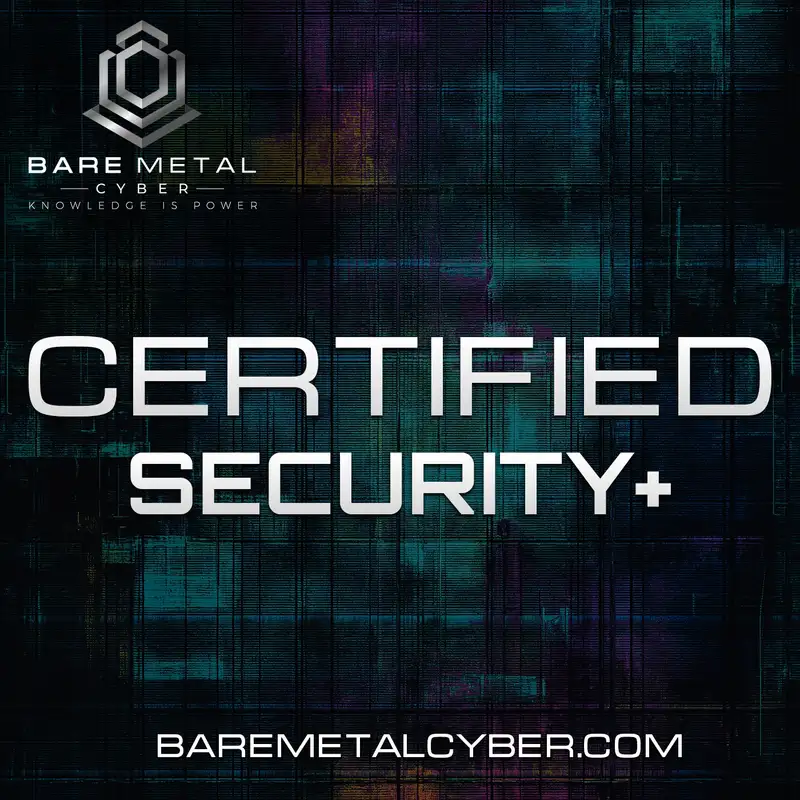Episode 24: Cryptographic Hardware and Secure Storage (Domain 1)
In this episode, we are focusing on the hardware side of cryptography—specifically, the devices and systems that securely generate, store, and manage cryptographic keys. While software encryption is vital, the hardware that supports it often determines how secure the system really is. Devices like Trusted Platform Modules, Hardware Security Modules, secure enclaves, and centralized key management systems all play essential roles in protecting sensitive data and maintaining the integrity of encryption-based operations.
Let’s begin with the Trusted Platform Module. A Trusted Platform Module is a specialized chip found on many modern devices that is designed to handle cryptographic functions securely at the hardware level. It is most commonly used for tasks like storing encryption keys, verifying the integrity of boot sequences, and enabling full-disk encryption.
The Trusted Platform Module helps establish device trust by ensuring that the system has not been tampered with before it loads the operating system. During the boot process, the Trusted Platform Module checks the signatures of key system files. If something has been changed—such as a malicious bootloader or rootkit—the device will not complete the boot sequence. This feature is essential in preventing attackers from installing persistent threats that run before security software is active.
Another key use case for the Trusted Platform Module is with full-disk encryption. When used with technologies like BitLocker, the Trusted Platform Module stores the keys needed to decrypt the disk and unlock the system. It ensures that those keys are only released if the system has not been altered. This allows for secure automatic unlocking without requiring the user to enter a password during startup.
Real-world scenarios highlight the value of Trusted Platform Modules. For example, in enterprise environments, thousands of laptops are deployed with full-disk encryption managed by the organization. The Trusted Platform Module allows each machine to boot securely, without user intervention, while ensuring that the encryption keys never leave the device. If a laptop is stolen, the disk remains unreadable, and the keys cannot be extracted even with physical access.
Next, let’s look at the Hardware Security Module. A Hardware Security Module is a dedicated appliance or plug-in device that performs high-security cryptographic functions. It is most often used in enterprise environments to generate, store, and protect private keys, especially those used in certificate authorities, banking applications, and secure authentication systems.
The main role of the Hardware Security Module is secure key management. Keys are generated inside the module and never leave it in unencrypted form. This reduces the risk of key theft, even from insider threats or malware. Hardware Security Modules often have built-in physical protections, such as tamper-resistant casings and sensors that detect physical attacks. If tampering is detected, the module can erase stored keys automatically to prevent compromise.
Typical deployments of Hardware Security Modules include secure email servers, payment processing systems, and identity providers. For example, a company that issues digital certificates to employees might use a Hardware Security Module to generate and sign those certificates, ensuring that the private key used for signing cannot be stolen. Large organizations may also use Hardware Security Modules in cloud environments, integrated with their key management systems to secure encrypted workloads at scale.
Now let’s move to secure enclaves and centralized key management systems. A secure enclave is a hardware-isolated environment within a processor that can perform sensitive operations in a protected space. Secure enclaves allow for processing sensitive data, such as passwords or cryptographic calculations, without exposing that data to the rest of the system.
Secure enclave technology is used in both consumer devices and enterprise systems. For example, in modern smartphones, secure enclaves store biometric data like fingerprints and facial recognition templates. These values are never accessible to the main operating system or apps, reducing the risk of data theft. In servers, secure enclaves are used to isolate critical workloads, such as processing private encryption keys or verifying the integrity of software before execution.
Centralized key management systems, on the other hand, are designed to manage the entire lifecycle of cryptographic keys—from creation to expiration, renewal, storage, and destruction. These systems are essential in environments where encryption is used across many platforms, such as databases, cloud services, and virtual machines.
A centralized key management system ensures consistency and security by controlling who can generate, access, or modify keys. It allows administrators to enforce policies such as automatic key rotation, role-based access control, and audit logging. These features are critical for compliance with regulations like the General Data Protection Regulation and the Health Insurance Portability and Accountability Act.
Without centralized key management, organizations often rely on ad hoc or manual methods to distribute and store encryption keys, increasing the risk of key loss or unauthorized access. With a centralized system in place, companies gain better visibility, control, and assurance that encryption practices align with business and regulatory needs.
As you prepare for the Security Plus exam, make sure you can distinguish between the functions of Trusted Platform Modules, Hardware Security Modules, secure enclaves, and key management systems. Understand where each fits in the security architecture and what kind of protection it provides. The exam may ask you to choose the right solution for a specific scenario—such as protecting biometric data, issuing digital certificates, or securely storing encryption keys at scale.
